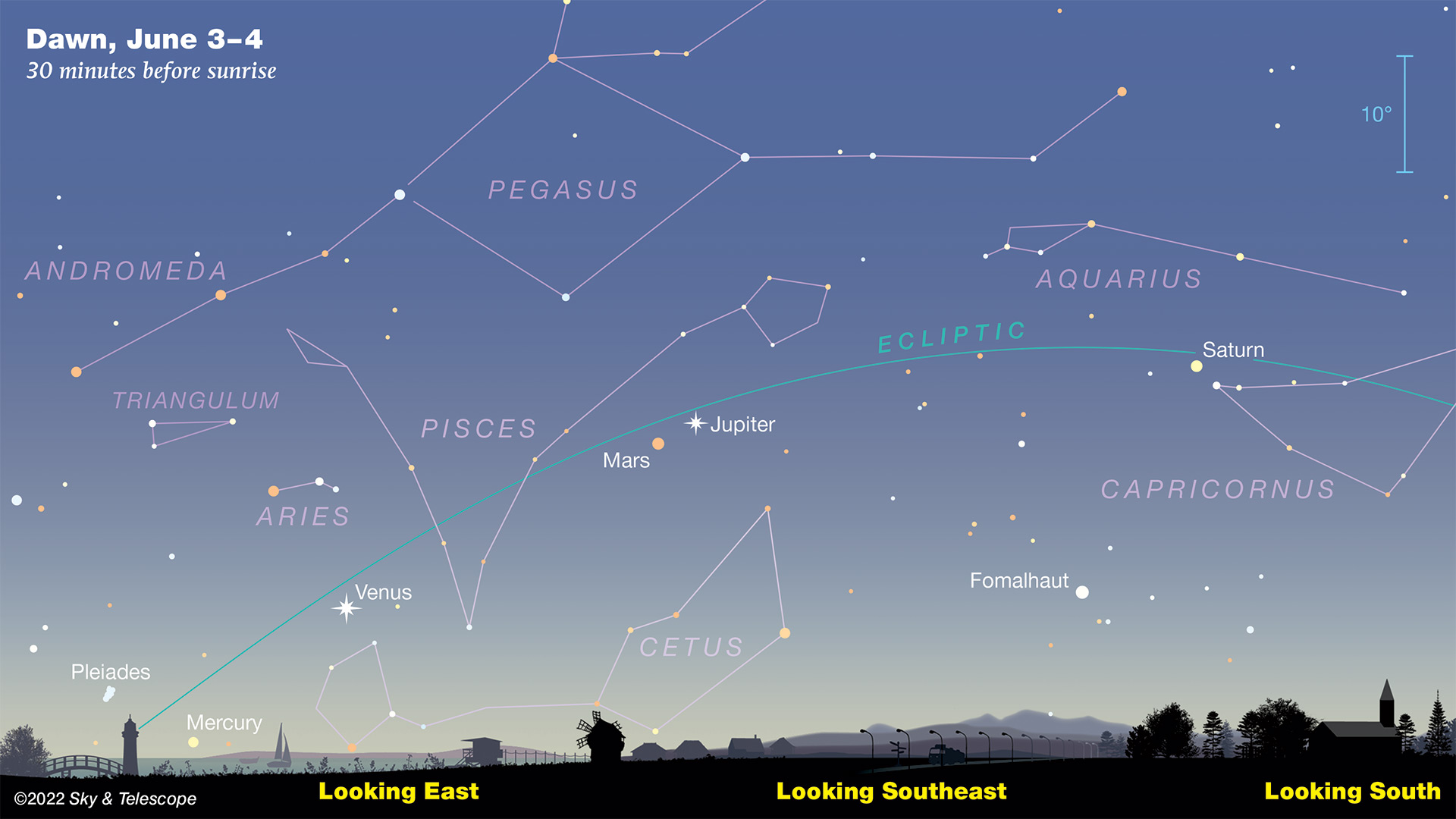See 5 planets align in the night sky this month in a rare treat!
Starting June 3, all five naked-eye planets will be up in the pre-dawn sky.

Skywatchers will be treated to a rare "planet parade" this month: All five naked-eye worlds will line up in their proper orbital order from the sun in our sky.
From left to right in the southeastern predawn sky, you'll be able to spot Mercury, Venus, Mars, Jupiter and Saturn all in a row. (Mercury will be quite close to the horizon when the show starts June 3 but becomes easier to spot as the month matures.)
The five-planet fiesta will span 91 degrees of our sky on June 3, according to Sky&Telescope. "Find a place with a clear view low toward the east to maximize your chances of catching Mercury," the magazine said in a press release.
You'll also need to move quickly. "You'll have less than half an hour between when Mercury first appears above the horizon, and when it essentially gets lost in the glare of the rising sun," Sky&Telescope wrote.
Related: The brightest planets in the June night sky

Looking for a telescope for the next planet sight or skywatching event? We recommend the Celestron Astro Fi 102 as the top pick in our best beginner's telescope guide.
The planets will shine in a row like that because they all travel on the plane of the solar system, known as the ecliptic. But they won't be nearly as close to each other as they appear; each of these worlds is millions of miles away from the others. Still, the show is not to miss; the last time we saw these five planets in such a configuration was 2004, Sky&Telescope said.
The best opportunity to see the spectacle might come on June 24. Mercury should be up about an hour before the sun, the magazine noted. Better yet, the crescent moon will be between Venus and Mars, "serving as a proxy Earth." But the planets will be a little further spread out, with a maximum range between Mercury and Saturn of 107 degrees. (Your clenched fist held at arm's length covers about 10 degrees of sky.)
Get the Space.com Newsletter
Breaking space news, the latest updates on rocket launches, skywatching events and more!
That said, if you're clouded out or unavailable on these dates, all five worlds should be visible through much of June.
If you take a photograph of the five-world fiesta, let us know! You can send images and comments in to spacephotos@space.com.
Conjunctions involving fewer worlds are very common in Earth's sky, and we want to make sure you're ready for the next opportunity when that happens.
If you're looking for binoculars or a telescope to see planets in the night sky, check our guide for the best binoculars deals and the best telescope deals now. If you need equipment, consider our best cameras for astrophotography and best lenses for astrophotography to prepare for the next planet sight.
Follow Elizabeth Howell on Twitter @howellspace. Follow us on Twitter @Spacedotcom or Facebook.
Join our Space Forums to keep talking space on the latest missions, night sky and more! And if you have a news tip, correction or comment, let us know at: community@space.com.

Elizabeth Howell (she/her), Ph.D., was a staff writer in the spaceflight channel between 2022 and 2024 specializing in Canadian space news. She was contributing writer for Space.com for 10 years from 2012 to 2024. Elizabeth's reporting includes multiple exclusives with the White House, leading world coverage about a lost-and-found space tomato on the International Space Station, witnessing five human spaceflight launches on two continents, flying parabolic, working inside a spacesuit, and participating in a simulated Mars mission. Her latest book, "Why Am I Taller?" (ECW Press, 2022) is co-written with astronaut Dave Williams.









